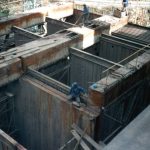ISESP XVI – Budapest, Hungary, 2022

TS1 – ESP fundamentals
Collection of Carbon Particles in Diesel Exhaust Gas Using Intermittent Dielectric Barrier Discharge
DIFFERENT TYPES OF DUST RESISTIVITY
Study on High Temperature Ultra-clean Electrostatic-fabric Integrated Precipitator Technology and Its Application Prospect in Cement Industry
TS2 – Advancements in power supply
The effect of Micro-Pulse Technologies power Supply on Electrostatic Precipitator performance
Performance Comparison of 1-Phase and 3-Phase HV Linear Power supplies for ESP in Recovery Boiler applications
Technical Analysis and Extended Application of Variable Frequency Power Supply
TS3 – ESP modeling
Combustion of Carbon Black collected on an ESP by Microwaves Irradiation using Slit Plate
Study of Effective Particle Charging Regions in a Corona Discharge in an Electrostatic Precipitator
Numerical Study on W-type Collecting Plates with Multiple Corona Electrodes of Electrostatic Precipitators⋆
Achieving Equal Flow Distribution with Flow Control Devices at outlet of Electrostatic Precipitator Using Control Dampers
TS4 – Novel applications and new techniques
Effect of electrode length and gas velocity on the collection of diesel exhaust particle in an electrostatic precipitator with a high electric field
Development of the Disinfecting Air Filter
Development of the Intelligent Flue Gas Conditioning Injection Rate Control
TS5 – Electrostatics and non-thermal plasma
Air Purification Systems for Large Scale Space Applied Electric Discharge Technology
Effect of electrostatic precipitation and agglomeration of particles on bag filter regeneration
Deepening of the Study of Corona Discharges by Recent Advances of Electrical and Optical Measurement Techniques
TS6 – Particle and aerosol charging
Influence of Electrode System Geometry on Efficiency of Particle Collection of a Compact Electrostatic Precipitator for Small Scale Biomass Combustion
Novel Compact Electrostatic Precipitators for Small Scale Biomass Combustion Facilities
THERMIONIC EMISSION – A KEY TO UNDERSTANDING HIGH TEMPERATURE ELECTROSTATIC PRECIPITATION
Investigating the reliability of needle-plane experiments with dust layer
TS7 – Industrial experience and case studies
FEASIBILITY OF HIGH-TEMPERATURE ELECTROSTATIC PRECIPITATION FOR THE REMOVAL OF NANOPARTICLES: A CASE STUDY ON IRON OXIDE SEPARATION AT UP TO 800 °C
Consideration of Frequent Low Loads Operation for Electrostatic Precipitator Installation
Effective use of wastewater in electrostatic precipitators
The Application of 3D Collaborative Design in Flue Duct Reconstruction of Coal-Fired Power Plant



